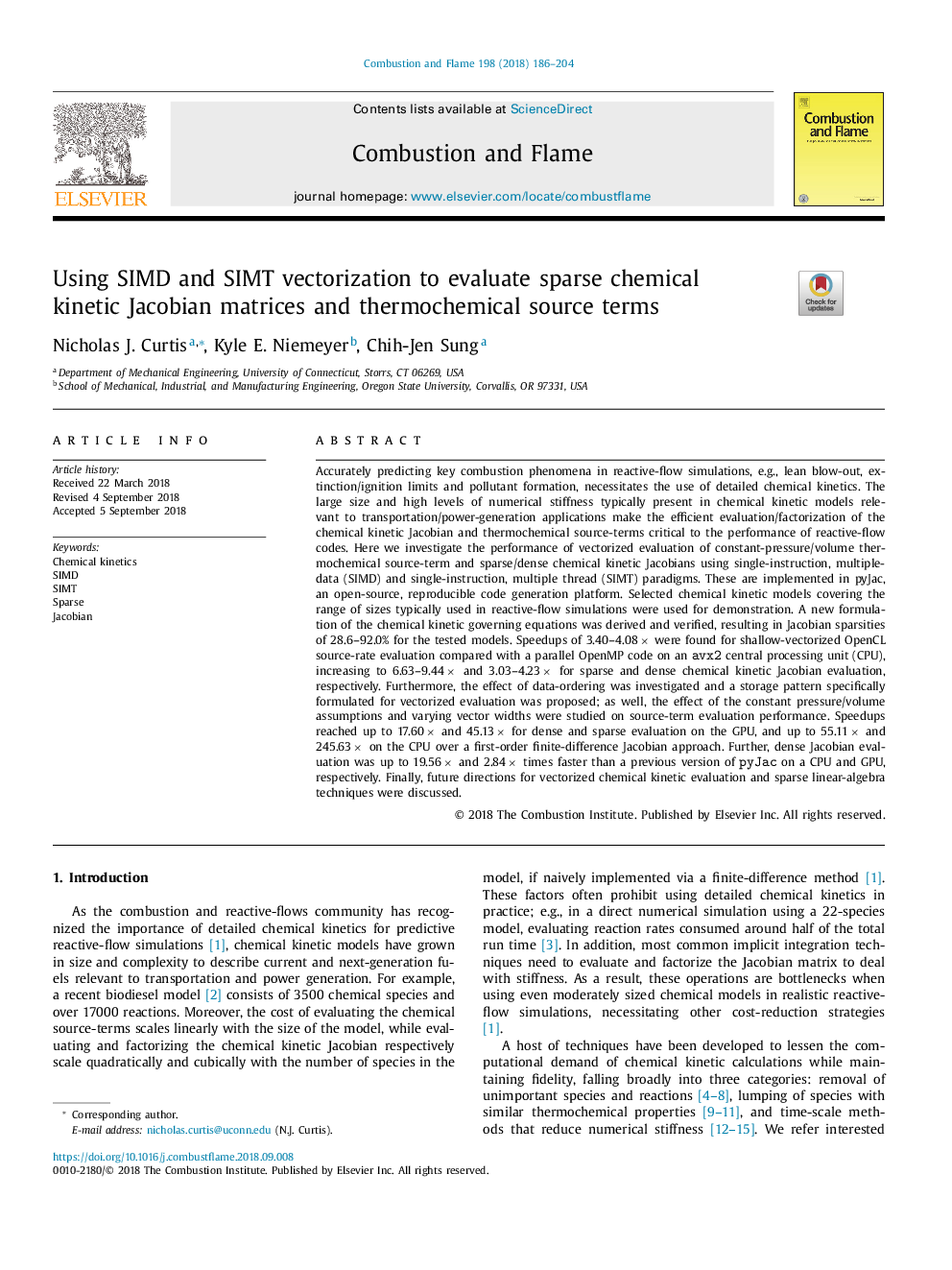| Article ID | Journal | Published Year | Pages | File Type |
|---|---|---|---|---|
| 11024445 | Combustion and Flame | 2018 | 19 Pages |
Abstract
Accurately predicting key combustion phenomena in reactive-flow simulations, e.g., lean blow-out, extinction/ignition limits and pollutant formation, necessitates the use of detailed chemical kinetics. The large size and high levels of numerical stiffness typically present in chemical kinetic models relevant to transportation/power-generation applications make the efficient evaluation/factorization of the chemical kinetic Jacobian and thermochemical source-terms critical to the performance of reactive-flow codes. Here we investigate the performance of vectorized evaluation of constant-pressure/volume thermochemical source-term and sparse/dense chemical kinetic Jacobians using single-instruction, multiple-data (SIMD) and single-instruction, multiple thread (SIMT) paradigms. These are implemented in pyJac, an open-source, reproducible code generation platform. Selected chemical kinetic models covering the range of sizes typically used in reactive-flow simulations were used for demonstration. A new formulation of the chemical kinetic governing equations was derived and verified, resulting in Jacobian sparsities of 28.6-92.0% for the tested models. Speedups of 3.40-4.08â¯Ã⯠were found for shallow-vectorized OpenCL source-rate evaluation compared with a parallel OpenMP code on an avx2 central processing unit (CPU), increasing to 6.63-9.44â¯Ã⯠and 3.03-4.23â¯Ã⯠for sparse and dense chemical kinetic Jacobian evaluation, respectively. Furthermore, the effect of data-ordering was investigated and a storage pattern specifically formulated for vectorized evaluation was proposed; as well, the effect of the constant pressure/volume assumptions and varying vector widths were studied on source-term evaluation performance. Speedups reached up to 17.60â¯Ã⯠and 45.13â¯Ã⯠for dense and sparse evaluation on the GPU, and up to 55.11â¯Ã⯠and 245.63â¯Ã⯠on the CPU over a first-order finite-difference Jacobian approach. Further, dense Jacobian evaluation was up to 19.56â¯Ã⯠and 2.84â¯Ã⯠times faster than a previous version of pyJac on a CPU and GPU, respectively. Finally, future directions for vectorized chemical kinetic evaluation and sparse linear-algebra techniques were discussed.
Related Topics
Physical Sciences and Engineering
Chemical Engineering
Chemical Engineering (General)
Authors
Nicholas J. Curtis, Kyle E. Niemeyer, Chih-Jen Sung,
